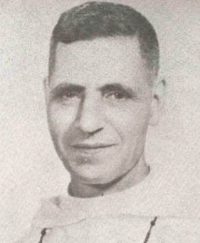This summer the city is deceptive. Its external appearance has remained the same. The streets are always wide and clear, and its buildings—almost all of them newly constructed—are free from the devastation of war. But it is a dead city. The soul and life that animated it before are sadly missing. Most of the stores, generally Chinese-owned, are closed and sealed. The merchandise which had not been looted by the people was taken by the Japanese who are now selling it at the public market. Almost all the houses have been abandoned or pillaged.
The streets are deserted and the parks have been converted into forests. There is not a single car or truck around except those of the army.
On our way up, I was surprised to see a new idea of transport, imported from Japan or China. It is in the form of carts with automobile tires, and pulled by men. The downhill trek is fast and convenient, but the uphill climb requires six or more men, and three or four days to make the 60 or 70 kilometers up the mountain. And they are lucky if at the police outposts along the way part of their merchandise would not be confiscated.
